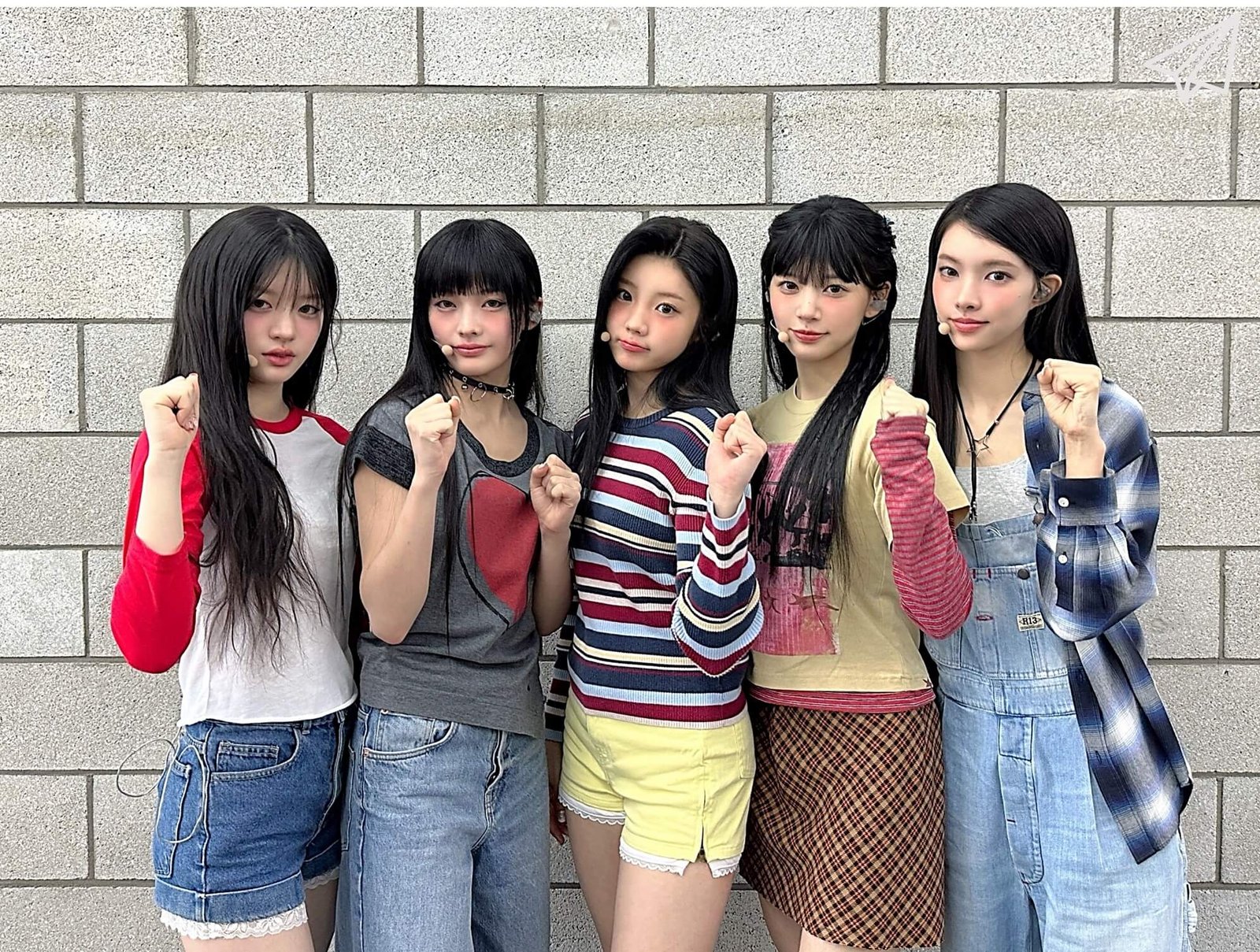BTS Jimin, ‘Who’ music video hits 100 million views

BTS Jimin, ‘Who’ music video is gaining immense popularity surpassed 100 million views. Let’s find out why “Who” is so popular both domestically and internationally.
Introduction


Jimin, the beloved member of the global K-pop sensation BTS, has achieved yet another remarkable milestone in his solo career. With his emotionally rich and visually stunning music video “Who” crossing over 100 million views on YouTube as of April 11, 2025, at exactly 4:08 p.m., it’s safe to say he’s not just maintaining his momentum—he’s accelerating it. This new record not only solidifies Jimin’s position as a powerhouse solo artist but also highlights the unwavering support of the ARMY, BTS’s global fanbase.
Jimin is no stranger to smashing records and setting new standards. Known for his deeply expressive performances and unique vocal color, Jimin has managed to touch hearts globally, not just with BTS but also through his individual artistry. “Who,” the title track from his second solo album MUSE, is a compelling example of his evolving style and artistic maturity.
The music video’s success is not a standalone event. It marks the third time a Jimin music video has crossed the 100 million mark, placing him in an elite category among Korean soloists. This milestone also underscores the global popularity of K-pop and how Jimin continues to be at the forefront of this cultural wave. From topping charts to earning international accolades, Jimin’s influence extends far beyond the Korean peninsula.
But this achievement isn’t just about numbers. “Who” resonates because of its emotional honesty, visual storytelling, and musical boldness. The song explores the paradox of yearning for a deep connection with someone you’ve never met—an idea that, oddly enough, feels universally relatable in our increasingly digital age. Paired with a music video that blends performance art and symbolism, it’s no wonder “Who” has captivated millions. As we dig deeper into the journey of this song and its impact, it becomes clear that Jimin isn’t just chasing success—he’s redefining what it means to be a solo K-pop artist.
The Milestone Achievement


The moment “Who” surpassed 100 million views was more than just a tick on the digital counter—it was a declaration. A declaration that Jimin’s artistry is not only powerful but enduring. This achievement, marked at 4:08 p.m. on April 11, joins an elite list of accomplishments in his blossoming solo career. It’s the third Jimin music video to reach this coveted milestone, joining “Set Me Free Pt. 2” and “Like Crazy,” both of which marked critical moments in his debut solo era with the album FACE.
Each of these music videos showcases a different facet of Jimin’s evolving identity as a solo artist. “Set Me Free Pt. 2” carried an intense, almost rebellious energy—a plea for liberation through a heavy trap-based beat and orchestral grandeur. “Like Crazy” contrasted that with dreamy, synth-pop vibes and introspective lyrics about disconnection and longing. Now, with “Who,” Jimin completes a compelling trifecta that maps out his emotional and artistic journey from vulnerability to exploration and now, a haunting yearning for something unattainable.
Reaching 100 million views is no easy feat, especially for a solo artist in a market often dominated by group performances. It demands consistent streaming, social media engagement, and word-of-mouth hype—all of which Jimin commands with magnetic ease. It’s also a testament to the dedication of his fans, who treat every release like a global event. The trending hashtags, streaming parties, and real-world events show how much this song and video mean to people.
In short, this isn’t just a view count—it’s a community milestone. It reflects not just interest but love, support, and deep emotional connection. And with three 100-million-view music videos now under his belt, Jimin isn’t just making history—he’s rewriting the playbook for solo success in K-pop.
Chart Domination
“Who” wasn’t just a viral hit on YouTube; it stormed global music charts with the force of a cultural phenomenon. Upon its release on July 19, 2024, the track made an explosive debut at No. 14 on Billboard’s prestigious “Hot 100″ chart. But it didn’t stop there. Instead of fading away after the initial hype—as many singles tend to do—”Who” clung tenaciously to its chart position week after week. It remained on the Billboard Hot 100 for an astonishing 33 weeks, breaking the record for the longest-charting K-pop song by both a group and a soloist.
This achievement is especially meaningful considering the competitive nature of the Billboard charts. Dominated by mainstream Western artists, cracking the Hot 100 is a feat in itself for international acts. Staying there for over half a year? Practically unheard of—until Jimin did it.
To put this in perspective, the previous longest-charting K-pop song was BTS’s global smash hit “Dynamite,” which held its ground for 32 weeks. With “Who” surpassing even that benchmark, Jimin has become the first Korean soloist to outlast his own group’s record on one of the most competitive charts in the world. It’s not just a personal victory; it’s a cultural milestone.
The song’s success in the U.S. is a reflection of Jimin’s growing influence as a global artist. It speaks volumes about the changing landscape of the music industry, where language and geography are no longer barriers to success. With emotionally resonant lyrics and an addictive, genre-blending sound, “Who” appealed to a broad audience, solidifying Jimin’s place not just in K-pop history, but in global pop culture.
👉 Go BTS Jimin Music Video “who”
UK Official Singles Chart Success


Jimin’s “Who” didn’t just dominate American charts—it also conquered the UK Official Singles Chart, one of the most prestigious and competitive music rankings in the world. The track stayed on the chart for an astounding 28 consecutive weeks, setting a historic record for the longest-charting Korean solo artist since the chart underwent a structural reorganization in 2014.
To understand the magnitude of this achievement, consider this: the UK music scene is notoriously tough for non-English-language artists to break into. It’s a space largely reserved for domestic acts or international megastars. For a Korean-language track to remain relevant in the UK for over half a year is groundbreaking. This record signifies a major cultural shift and proves that language barriers are crumbling faster than ever in the global music landscape.
Jimin’s success on the UK charts also reveals something deeper about the song’s universal appeal. “Who” speaks to emotional vulnerability, longing, and the deep, often confusing quest for love—feelings that transcend culture. Its production blends R&B and synth-pop with emotionally charged lyrics, making it accessible to listeners from all backgrounds. This unique musical flavor likely played a major role in its sustained popularity overseas.
Beyond its sonic elements, the presence of BTS’s loyal ARMY in Europe can’t be understated. They organized massive streaming campaigns, digital purchases, and even radio requests to help the song climb and stay on the charts. Their passion and dedication created a ripple effect, pulling in casual listeners and new fans alike.
The UK record is more than just a badge of honor—it’s proof that Jimin has carved out a distinct identity as a soloist capable of standing shoulder-to-shoulder with the biggest names in global pop music. It’s a bold statement that his influence is no longer confined to the K-pop niche but is now embedded in the broader pop culture zeitgeist.
International Recognition
As if dominating charts in the U.S. and UK weren’t enough, “Who” also earned a major milestone in Japan—a country with its own distinct music industry and certification standards. On March 28, the Recording Industry Association of Japan (RIAJ) officially awarded “Who” a Gold certification in the streaming category. This marks yet another level of international recognition for Jimin, emphasizing his multi-market appeal and the global power of his music.
RIAJ Gold certification is no small feat. In Japan, a track must reach over 50 million streams to qualify, making this accolade a true indicator of enduring popularity. For a Korean soloist to receive this level of certification is still relatively rare, and it solidifies Jimin’s position as not just a domestic icon, but a global music force.
This Japanese milestone also reflects Jimin’s established rapport with Japanese fans, many of whom have followed BTS from their early Japan tours and albums. His soft vocal tone, emotive delivery, and sincere connection to his audience have always resonated strongly in the Japanese market. With “Who,” Jimin expanded that connection even further, blending universal emotions with a sophisticated musical arrangement that appealed across cultural lines.
The Gold certification also symbolizes strategic growth in the broader Asian music market. Japan is the second-largest music market in the world, and achieving such recognition there speaks to Jimin’s strategic importance in the industry. It’s also worth noting that this achievement isn’t just about statistics—it’s a sign of heartfelt reception, countless personal replays, and real emotional impact on listeners.
From South Korea to Japan, the UK to the U.S., Jimin is shaping up to be one of the most influential soloists of his generation. Every accolade, every certification, and every chart milestone isn’t just another feather in his cap—it’s a confirmation that his music connects across borders, languages, and hearts.
👉 Go BTS Jimin Music Video “who”
iHeartRadio Music Awards 2025
Jimin’s domination didn’t stop at digital streams and chart records—he also stole the spotlight at the 2025 iHeartRadio Music Awards, taking home the trophy for “K-POP SONG OF THE YEAR” with “Who.” This prestigious recognition came as no surprise to fans who had witnessed the song’s meteoric rise, but it firmly cemented Jimin’s global impact in the mainstream music industry.
The iHeartRadio Music Awards are one of the most-watched global music events, known for honoring the most streamed and buzzworthy artists across genres and regions. For Jimin to not only be nominated but also win in a high-profile category speaks volumes about both the song’s reach and his star power. Competing in a category that likely included other K-pop heavyweights makes this win even more meaningful—it’s proof that “Who” stood out in an ocean of fierce competition.
This win also reflects how Western media and the global industry at large are recognizing K-pop not just as a niche genre, but as a legitimate player on the world stage. More importantly, it demonstrates how Jimin is being embraced not just as a BTS member, but as an individual artist with a unique voice and aesthetic. His performances, songwriting, and visual storytelling have consistently pushed creative boundaries, and the award simply confirmed what fans have always known—Jimin is a force of nature.
Social media exploded the moment his name was announced. Fans worldwide trended hashtags like #JiminWinsiHeart, flooding platforms with congratulatory messages, fan art, and edited videos celebrating the win. It was more than just an award—it was a moment of collective joy, validation, and pride for fans who had supported the track tirelessly from day one.
In short, the iHeartRadio win was not just a feather in Jimin’s cap—it was a global cultural moment that added yet another layer to the ever-growing legacy of “Who.”
The Artistic Depth of ‘Who’
One of the reasons “Who” has captivated so many listeners is its profound artistic depth. Unlike many pop songs that rely on surface-level hooks and generic themes, “Who” dives into a haunting emotional realm—the ache of longing for someone you’ve never even met. It’s this nuanced, almost poetic concept that sets the song apart and makes it resonate so powerfully across audiences.
Lyrically, the song explores an emotional paradox: yearning for love so deeply that it begins to manifest even in the absence of a specific person. This sense of emotional displacement—missing a phantom figure—is something many people relate to, especially in today’s world filled with digital relationships, unfulfilled desires, and mental solitude. It taps into a quiet sadness that simmers below the surface of our everyday lives.
Musically, the track is a masterclass in contrast. The bold, sexy beats and rhythmic production give it a confident, swagger-filled exterior. Yet the lyrics are surprisingly innocent and tender, repeatedly echoing the desire to find “true love.” This clash between sound and sentiment creates a push-pull effect that draws listeners deeper into the narrative.
This emotional complexity is magnified by Jimin’s delivery. His vocals are breathy yet precise, soft but emotionally loaded. Every line is infused with intention—whether it’s a whisper of vulnerability or a near-cry of frustration. His ability to embody multiple emotional states within a single verse is what elevates “Who” from just a pop song to a piece of emotive art.
Ultimately, “Who” is a reflection of Jimin’s maturity not just as a performer, but as an artist. He’s not afraid to delve into uncomfortable feelings or use unconventional structures to tell a story. The song doesn’t give you all the answers—but it leaves you asking the right questions. And that, in the world of pop music, is a rare and beautiful thing.
Song Concept and Emotional Layers
At its core, “Who” is a story about emotional contradiction—about missing someone you’ve never encountered, and feeling a profound emptiness that doesn’t quite make sense. This concept might sound abstract, but it mirrors real experiences many people go through, especially in the modern world where online relationships, long-distance crushes, or dreams of ideal love are common.
Jimin captures this emotional gray area with striking clarity. His lyrics hint at desperation, confusion, and hope, all tangled together in a web of aching desire. It’s a raw, honest portrayal of longing, yet he avoids melodrama by balancing it with sincere, almost childlike hope. This balance is part of what makes the song hit so hard—it feels real, relatable, and deeply human.
The production further amplifies this emotional landscape. The beat is smooth and seductive, loaded with R&B grooves and subtle electronic flourishes. But as you listen more closely, you notice the tension—minor chords, reverb-heavy textures, and quiet breaks that evoke a sense of loneliness. It’s like dancing through heartbreak with a smile you’re forcing to keep on.
What’s even more fascinating is how the song’s emotional themes bleed into its visual storytelling. In the music video, Jimin wanders through a city filled with people but remains isolated. It’s a metaphor for the emotional solitude that often haunts people even when surrounded by others. He’s not alone, but he’s lonely. And that feeling is the heartbeat of the song.
“Who” isn’t just a song; it’s an emotional journey. It gives voice to the unspoken feelings many carry around but never articulate. And through his voice, his visuals, and his vulnerability, Jimin gives those emotions a place to live—and for many fans, a way to heal.
The Music Video That Speaks Volumes
From the very first frame, Jimin’s “Who” music video pulls viewers into an atmospheric journey that is as visual as it is emotional. The video isn’t just a backdrop for the song—it’s an extension of its story, a carefully choreographed narrative that mirrors the song’s themes of isolation, longing, and a desperate quest for love. Rather than relying on flashy effects or elaborate sets, the video leans heavily into raw performance and symbolic storytelling, creating a deeply immersive experience.
The entire visual presentation hinges on Jimin’s solo performance as he walks the city streets alone, seemingly unnoticed by crowds passing by. There’s no cast of dancers, no dramatic love interest—just Jimin, a lone figure trying to make sense of his place in a bustling world. This sense of solitude reinforces the idea at the heart of the song: the pain of yearning for someone who doesn’t exist.
What’s brilliant about the video is how it uses space and movement. Jimin’s fluid choreography communicates more than words ever could. Every step, turn, and gesture feels intentional. Whether he’s stumbling slightly or confidently striding forward, his body becomes the language of heartbreak. The camera follows him with fluid, handheld motions that mirror his emotional state—sometimes calm, sometimes jittery, always personal.
The lighting and color tones also deserve a mention. The video’s muted palette, filled with cool blues and soft whites, adds to the dreamlike quality of the narrative. Subtle flares of warm light sneak in occasionally, perhaps symbolizing fleeting hope. These aesthetic choices aren’t just artistic—they’re deeply thematic, giving the audience a visual cue into Jimin’s emotional psyche.
Every detail—from his clothing to his expressions—is curated to evoke vulnerability. It’s a music video that doesn’t demand attention with extravagance, but rather seduces the viewer into introspection. In today’s age of overproduced visuals, the minimalism and honesty of “Who” stand out. It’s not just a video—it’s a visual poem.
Visual Storytelling and Direction
What makes the “Who” music video truly extraordinary is its cinematic approach to storytelling. Directed with a meticulous eye for emotion, the video takes viewers on an introspective walk through urban isolation and subconscious yearning. The choice of framing, camera angles, and editing play a huge role in translating the invisible—feelings—into something tangible and visually arresting.
Let’s start with the camera work. The movements are intimate, often keeping the lens close to Jimin as if inviting the viewer into his inner world. At times, it feels almost voyeuristic—like we’re peeking into someone’s private moment of reflection. There’s a vulnerability in how the shots linger on his face, capturing the smallest flickers of emotion. These unguarded moments make the video feel deeply personal.
Another standout element is the use of symbolism throughout the narrative. One recurring motif is the constant crowd that passes by Jimin, never acknowledging him. This isn’t just background noise—it’s a visual metaphor for emotional disconnection. Despite being surrounded by people, Jimin is completely alone. It’s a sentiment that resonates with many in our hyper-connected yet emotionally distant modern world.
Then there’s the use of LED signs displaying the names of tracks from the album “MUSE.” This clever Easter egg acts as both a visual enhancer and a narrative device. It subtly links the entire album’s themes into one cohesive universe, suggesting that “Who” is part of a broader emotional journey, not just a standalone moment.
The flyers marked with “1995’s TOP love song” and the camcorder-style footage add layers of nostalgia and yearning, invoking a vintage aesthetic that feels like flipping through an old scrapbook. This, again, ties into the idea of missing someone or something that might never have been real but feels profoundly impactful nonetheless.
The visual storytelling of “Who” doesn’t scream—it whispers. And in those whispers, it tells a story louder than most pop visuals ever could.
👉 Go BTS Jimin Music Video “who”
Vintage Aesthetic Elements
One of the most visually striking features of the “Who” music video is its vintage aesthetic, a choice that adds both emotional texture and timeless charm to the overall production. Rather than going the ultra-modern, tech-heavy route seen in many contemporary K-pop videos, “Who” embraces a retro visual style that perfectly complements the song’s themes of nostalgic yearning and emotional confusion.
From the moment you see flyers with the phrase “1995’s TOP love song” plastered on walls, you know this video is dipping into retro territory. This isn’t just a stylistic choice—it’s a thematic anchor. The year 1995 evokes a sense of longing for the past, which mirrors the song’s emotional core of missing something (or someone) undefined. It’s a throwback to a time when love was slower, perhaps more sincere, and definitely less filtered by modern distractions.
The video also includes scenes shot with what appears to be camcorder-style footage—grainy, slightly blurred clips that contrast sharply with the crisp high-definition visuals of the rest of the video. These moments feel like memories captured on home video, evoking a deep sense of nostalgia. It’s as if we’re watching fragments of a dream or glimpses of a life that never happened but feels painfully real.
Additionally, the use of monochromatic and desaturated tones reinforces the vintage feel. These muted colors strip away distractions and place the focus squarely on Jimin’s expressions and movements. Even the lighting feels like it’s been pulled from a different era—soft, glowy, and quietly melancholic.
This aesthetic choice doesn’t just make the video visually appealing—it deepens the emotional impact. The vintage look adds a layer of timelessness, suggesting that the emotions Jimin explores aren’t bound to a specific era or culture. Love, confusion, longing—these are universal, ageless feelings. And by wrapping them in a vintage package, “Who” becomes not just a song or a story, but a memory we all feel like we’ve lived.
Album ‘MUSE’: A Deeper Dive
“Who” might be the centerpiece, but it’s only one part of a larger masterpiece—Jimin’s second solo album, “MUSE.” The album, released on July 19, 2024, offers a multidimensional exploration of love, identity, and artistic growth. It’s a deeply personal project that sees Jimin diving even deeper into storytelling, both sonically and visually.
The music video for “Who” cleverly incorporates titles of other tracks from “MUSE” through LED signage, subtly tying the entire album together in one visual narrative. This isn’t just a music video for a single—it’s a snapshot of an entire emotional landscape. Each song on “MUSE” explores different facets of romantic and self-love, from vulnerable introspection to bold declarations.
Musically, “MUSE” blends genres like R&B, synth-pop, and soul, showcasing Jimin’s expanding range and willingness to experiment. There’s a noticeable shift from the darker tones of his first solo project FACE, signaling emotional growth and a clearer vision of his identity as a soloist. “Who” sits at the heart of this transition—it’s bold in sound but fragile in meaning, reflecting both strength and vulnerability.
Lyrically, the album is layered with poetic metaphors and sincere confessions. Jimin co-wrote many of the tracks, further cementing his role not just as a performer but as a true artist. The themes aren’t just about love for another person—they’re about loving oneself, healing from old wounds, and seeking authenticity in a world filled with facades.
The cohesive design of the album, from track progression to visual cues in the “Who” video, shows meticulous planning and a clear artistic vision. It’s not just a playlist—it’s a journey. And like any good journey, it changes you. With “MUSE,” Jimin isn’t just entertaining his fans—he’s inviting them into his world, one beautifully crafted song at a time.
Connection Between Songs and Visuals
The brilliance of “MUSE” lies not just in its sound, but in how it visually connects its songs into a singular narrative, especially through the music video for “Who.” Each track on the album carries its own emotional weight, yet they all contribute to the overarching theme of longing, discovery, and self-reflection. This thematic cohesion turns the album from a simple collection of songs into an emotional tapestry—and “Who” is the visual thread that ties it all together.
In the music video, the LED signs flashing titles from other tracks aren’t just cool Easter eggs. They are visual bridges connecting the viewer to the broader world of “MUSE.” For fans who’ve listened to the album in full, these references feel like breadcrumbs, leading them through Jimin’s emotional maze. It’s a clever way of inviting deeper engagement, encouraging fans to explore the full body of work rather than stopping at the single.
There’s also a noticeable flow in how the emotions of each track are reflected in Jimin’s performance in the “Who” video. The subtle choreography, facial expressions, and costume choices echo the emotional stages explored throughout the album—confusion, hope, heartbreak, and resilience. The visual and lyrical synergy amplifies the album’s message, making every detail feel intentional.
Even the nostalgic elements—like the camcorder footage and vintage flyers—align with the themes of certain tracks, particularly those that deal with memories, lost love, or the passage of time. These visual callbacks serve as anchors, helping to unify the album’s diverse emotional tones.
In short, “MUSE” and its visuals don’t just coexist—they collaborate. They create a richer, more immersive world where every note and every frame builds upon the last. And at the center of it all stands Jimin, not just as a singer or dancer, but as a true muse himself—guiding us through the emotional art gallery of his soul.
Jimin’s Solo Career Evolution
Jimin’s solo journey is nothing short of phenomenal. While BTS has always been a powerhouse group redefining global pop, Jimin has taken the brave step of carving out a distinct identity as a solo artist, and he’s done it with class, emotion, and undeniable artistry. From the introspective themes of his first solo album FACE to the poetic resonance of MUSE, his evolution reflects both personal growth and artistic ambition.
His early solo efforts, like “Lie” and “Serendipity” during BTS’s group promotions, were already indicative of his potential. Those tracks showed off his ethereal voice and emotional depth, giving fans a taste of what was to come. But it wasn’t until FACE dropped that Jimin truly started to tell his own story—one filled with inner battles, identity struggles, and a longing for healing.
“Set Me Free Pt. 2” showcased raw emotion through powerful choreography and orchestral elements. Then “Like Crazy” gave us a more synth-heavy, dreamy approach to escapism. But MUSE? It represents a more mature Jimin, confident in his vulnerability and precise in his storytelling. “Who,” in particular, shows an artist comfortable with contradictions: bold in sound, soft in meaning; solitary in visuals, universal in message.
One of the most impressive aspects of his evolution is how hands-on he’s become in the creative process. From writing lyrics to conceptualizing visuals, Jimin’s fingerprints are all over his solo work. He’s not just performing—he’s building a world. A world where emotional complexity is not just accepted, but celebrated.
This evolution has also expanded his audience. While his core ARMY fanbase remains fiercely supportive, more and more casual listeners, critics, and even fellow artists have taken notice. With each release, he’s not just proving his talent—he’s reshaping what it means to be a K-pop soloist on the global stage.
Global Impact and Fanbase Support
Behind every record-breaking moment and award-winning release lies one constant force: ARMY. Jimin’s global impact wouldn’t be possible without the passionate, tireless efforts of his fans, who span continents, languages, and time zones. They are more than just listeners—they are collaborators in his journey, streaming, promoting, translating, and supporting his every move with unwavering loyalty.
When “Who” dropped, ARMY immediately organized streaming projects, both online and offline. Social media was flooded with playlists, watch parties, and countdowns. They created art, fan edits, and reaction videos, amplifying the song’s reach and emotional impact. It’s a level of engagement that goes far beyond casual fandom—it’s a global movement fueled by genuine love and connection.
This support is also responsible for many of the song’s global milestones. From charting on the Billboard Hot 100 for 33 weeks to breaking records in the UK and Japan, ARMY’s coordination and dedication are key. In fact, it’s not uncommon for fanbases to mobilize thousands of people within hours to achieve digital milestones—whether it’s breaking streaming records or trending hashtags worldwide.
Beyond numbers, ARMY also amplifies the emotional messages in Jimin’s music. Fans often share stories of how “Who” helped them process their own feelings of loneliness or unspoken longing. They write letters, create fan fiction, or simply find solace in the lyrics. In this way, the song becomes more than just entertainment—it becomes therapy, a shared emotional experience that connects people across the globe.
What makes Jimin’s global impact so profound is this deep reciprocity between artist and audience. He gives his all in every performance, lyric, and visual—and in return, his fans give their hearts. Together, they’ve built a legacy that’s not just about numbers, but about meaning. And with this kind of support, the future for Jimin—and for music itself—looks brighter than ever.
Conclusion
Jimin’s “Who” is not just another K-pop song—it’s a milestone in modern music history. From surpassing 100 million views on YouTube to dominating the Billboard Hot 100 for 33 weeks, from setting UK chart records to winning at the iHeartRadio Music Awards, “Who” represents everything a successful, emotionally rich solo era should be. But more than numbers and trophies, it’s the why behind the success that truly matters.
“Who” resonates because it’s honest. It dares to explore loneliness, confusion, and longing without dressing them up in clichés. It’s poetic yet accessible, bold yet tender. And through Jimin’s voice and vision, those emotions are transformed into something timeless. Something beautiful.
The music video takes that message even further, using minimalism, vintage aesthetics, and masterful storytelling to reflect the song’s emotional core. And let’s not forget MUSE, the album that anchors “Who” into a broader narrative of love and self-discovery. Jimin isn’t just making music—he’s building a world.
With the tireless support of ARMY, and the recognition of the global industry, Jimin has proven that a Korean soloist can not only survive but thrive on the world stage. He’s not riding on BTS’s success—he’s creating a legacy of his own.
As fans stream, celebrate, and reflect, one thing is clear: this is only the beginning. Jimin has more stories to tell, more emotions to explore, and more hearts to touch. And if “Who” is any indication of what’s to come, we’re all lucky to be along for the ride.
👉 Go BTS Jimin Music Video “who”
FAQs
What is Jimin’s song “Who” about?
“Who” explores the emotional turmoil of missing someone you’ve never met. It’s about longing for true love and feeling isolated even in a crowd, all wrapped in a haunting, sexy rhythm.
How many Jimin music videos have surpassed 100 million views?
As of April 2025, Jimin has three music videos that have surpassed 100 million views: “Set Me Free Pt. 2,” “Like Crazy,” and “Who.”
What chart records did “Who” break?
“Who” stayed on Billboard’s Hot 100 for 33 weeks, making it the longest-charting K-pop song by a group or soloist. It also remained on the UK Official Singles Chart for 28 weeks—the longest for a Korean solo artist.
What makes the “Who” music video special?
The video stands out for its minimalist approach, emotional choreography, and symbolic visuals like LED signs and vintage camcorder-style scenes. It complements the song’s themes of loneliness and emotional confusion.
How does “MUSE” differ from Jimin’s previous album “FACE”?
While FACE delved into darker emotions and personal healing, MUSE explores love, longing, and artistic freedom with a more polished and experimental sound. It shows Jimin’s evolution as both a performer and storyteller.
📌 Related Articles
- ‘When Life Gives You Tangerines’ Free OST and singer information
- K-pop is the trend now, the most anticipated K-pop star of 2025
- Where to go in Seoul? Everything you need to know about purchasing official K-POP goods
- Introducing KiiKii, the K-pop star who will create a new sensation




